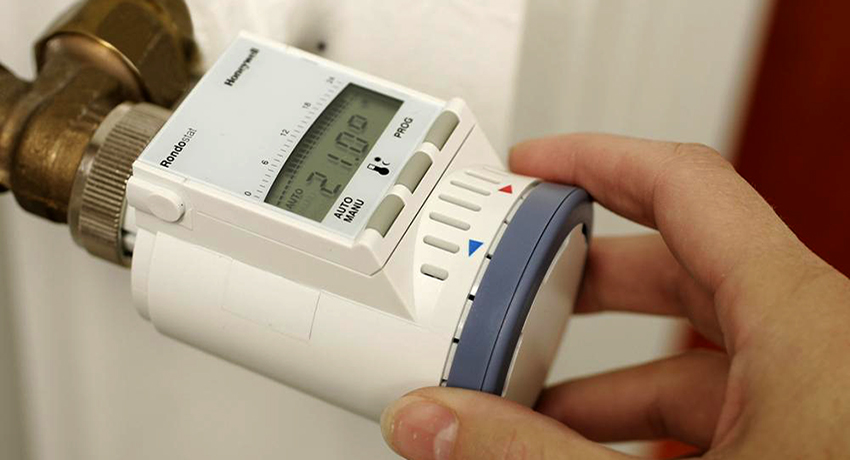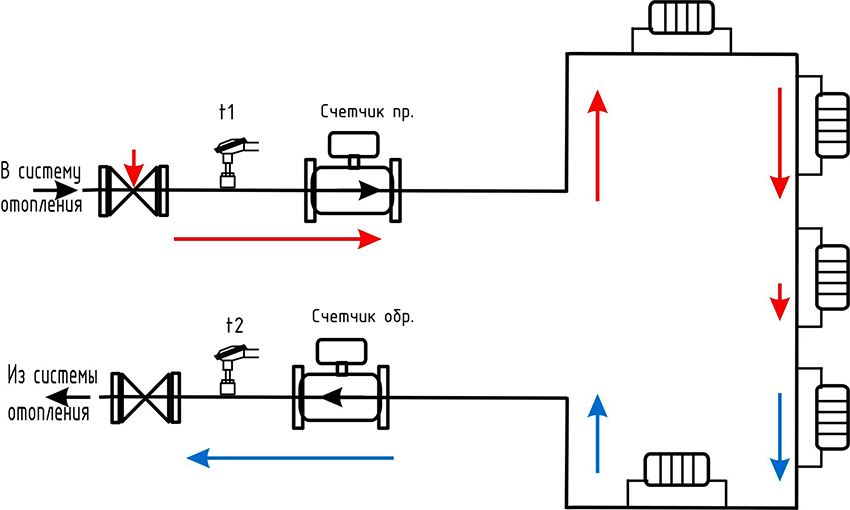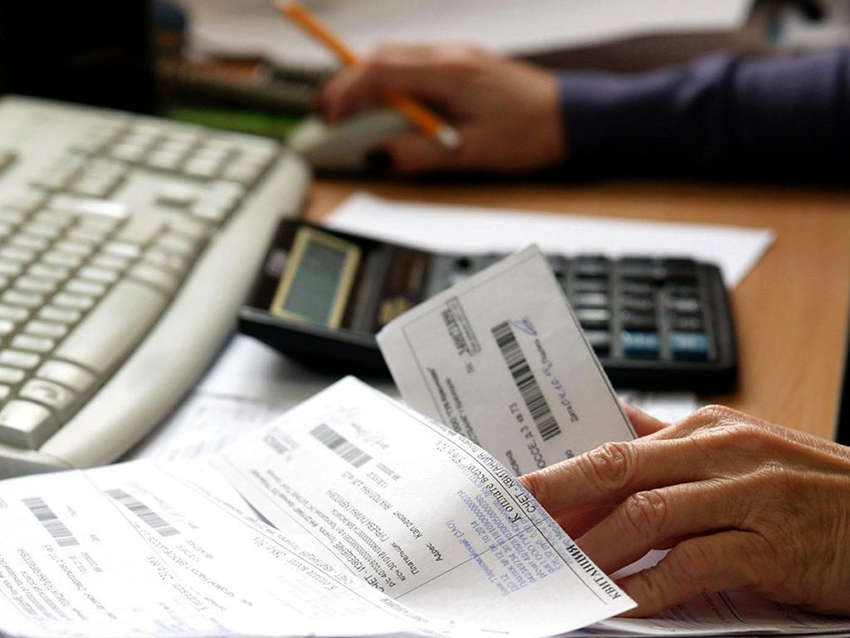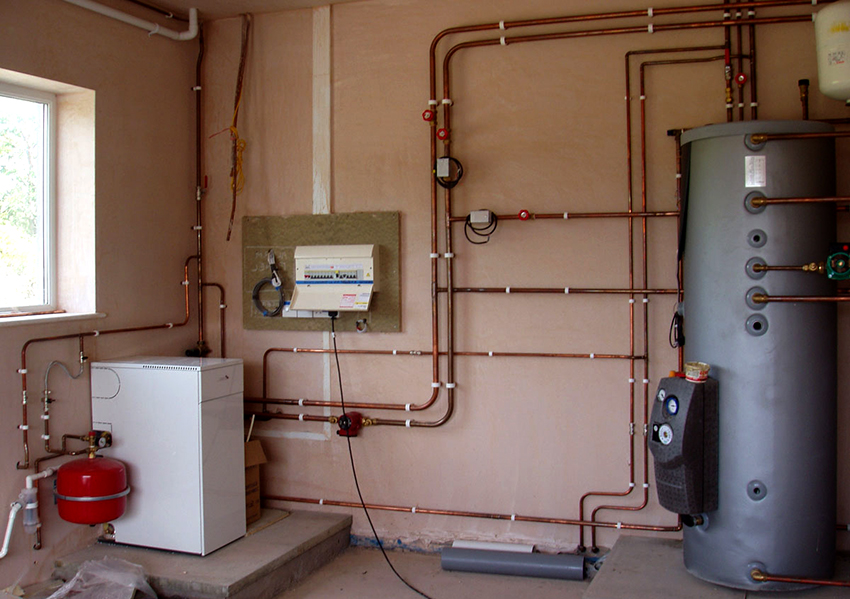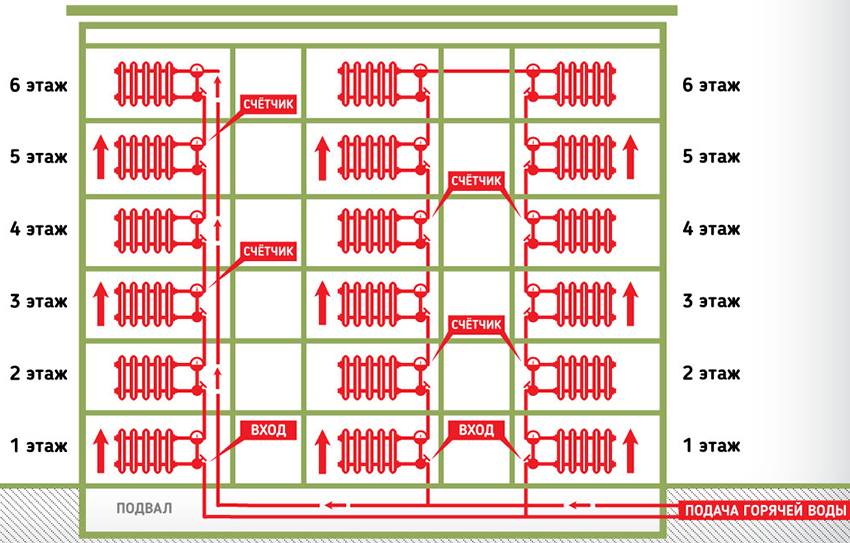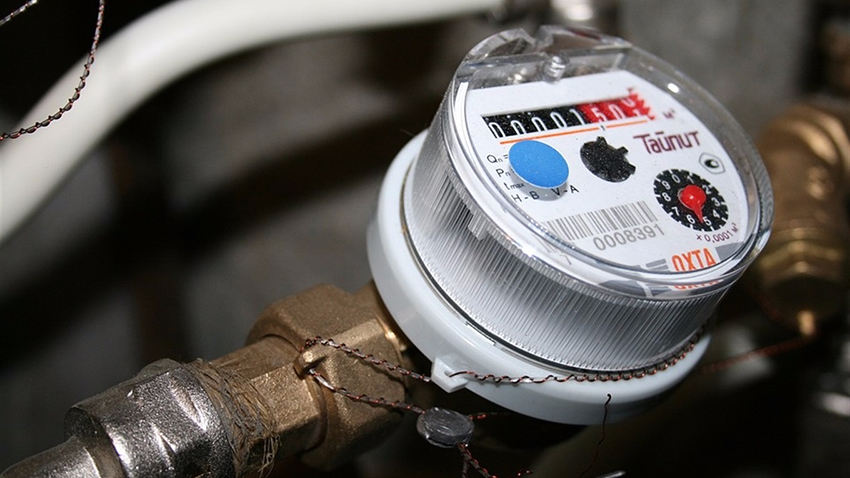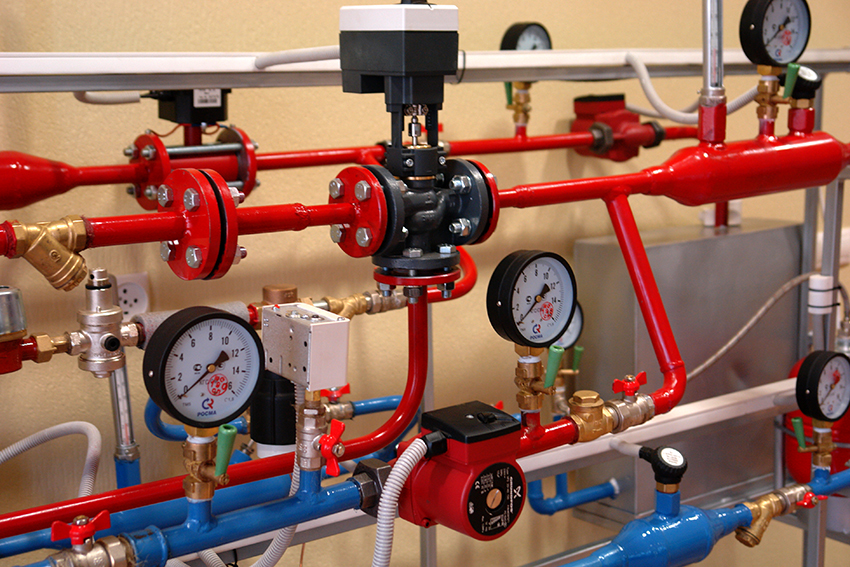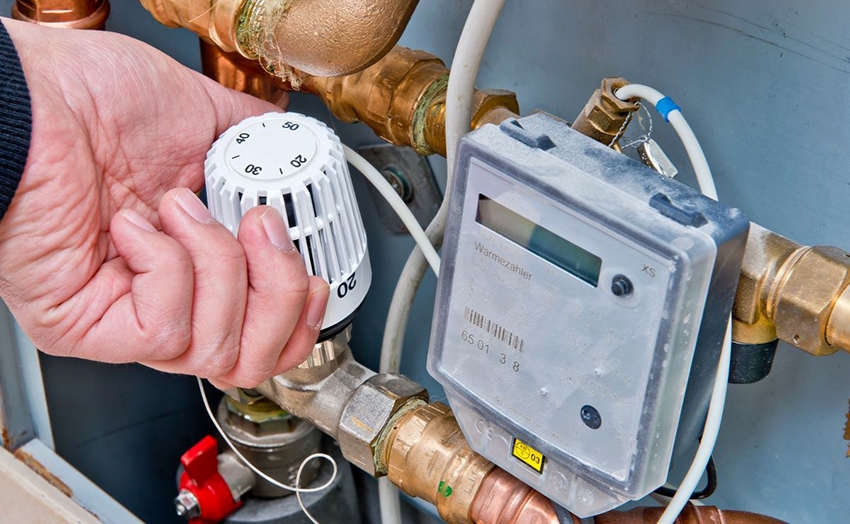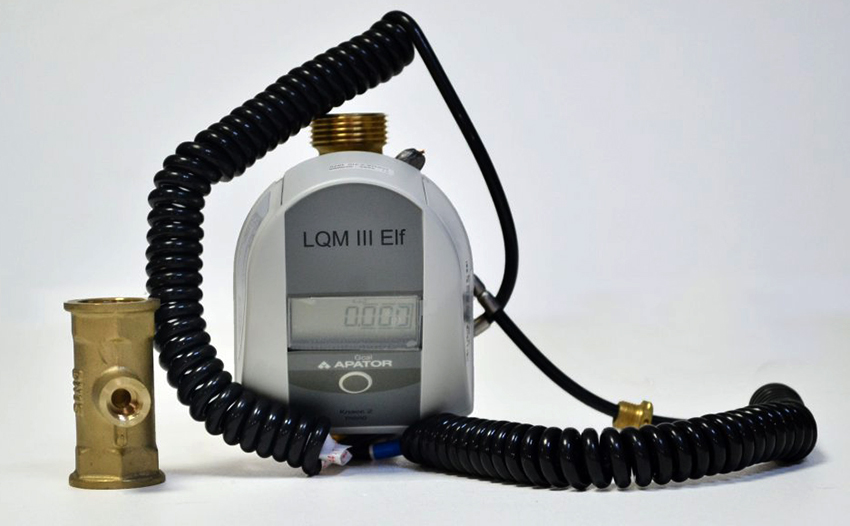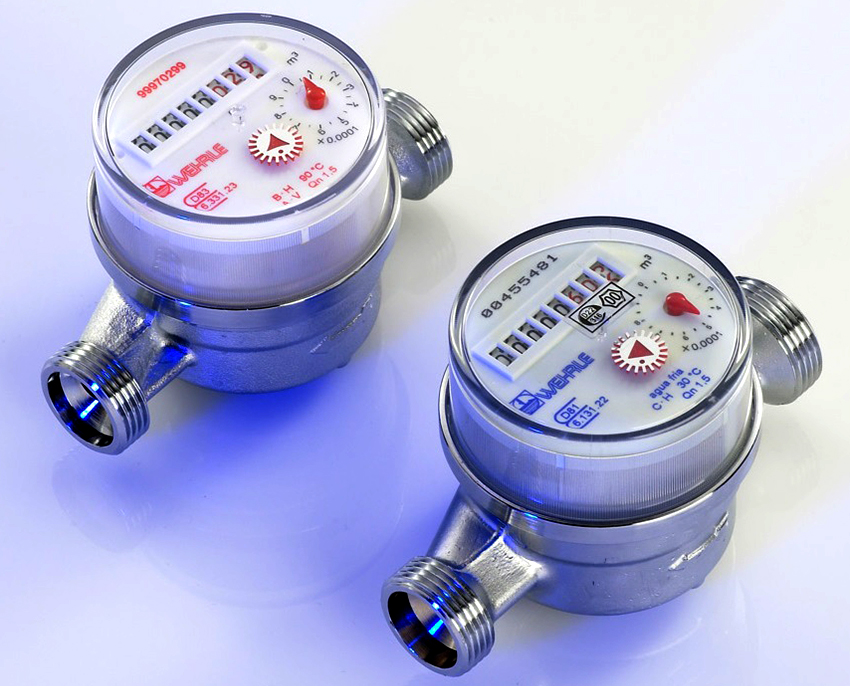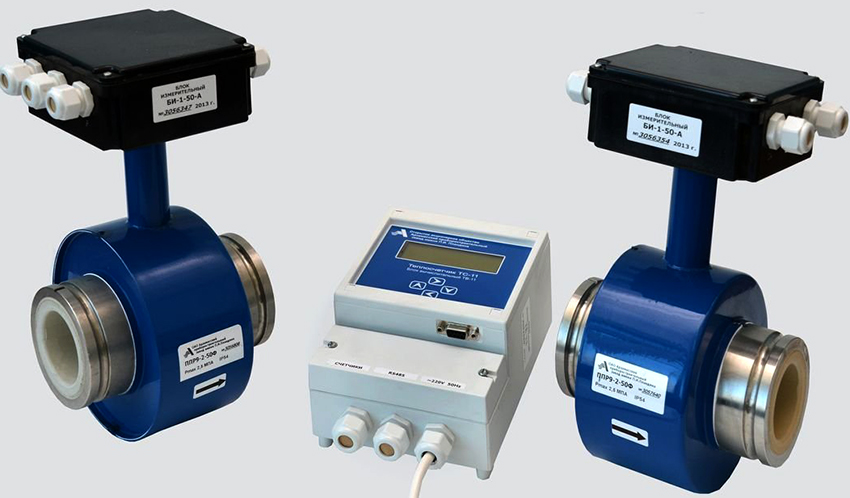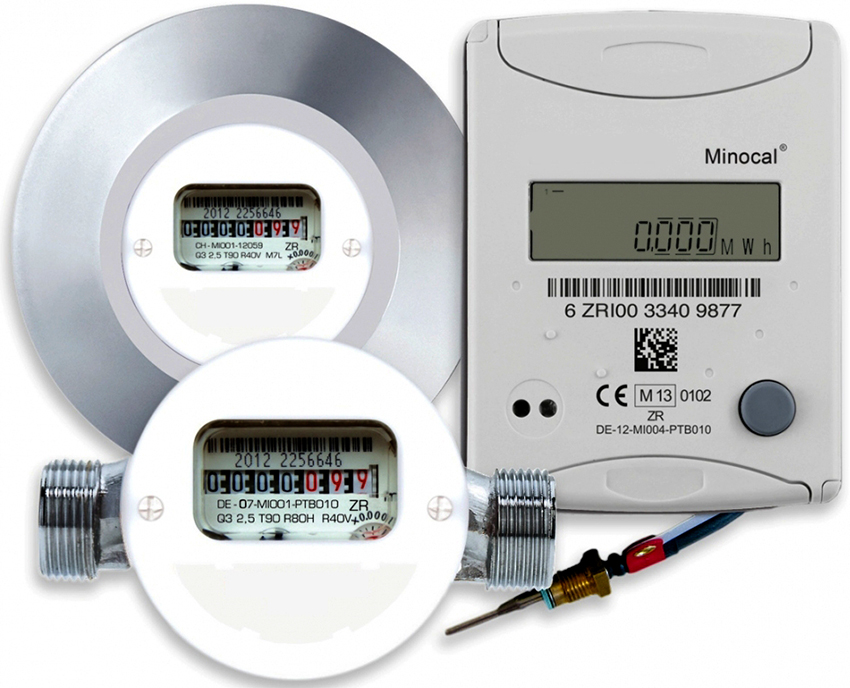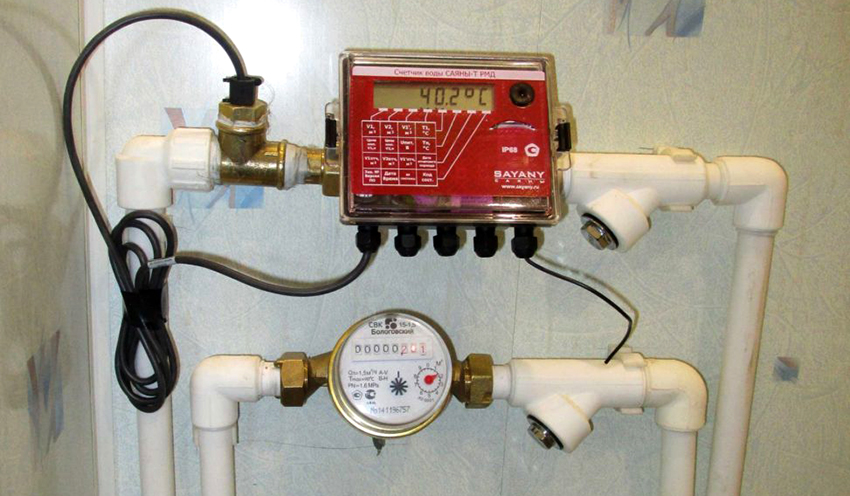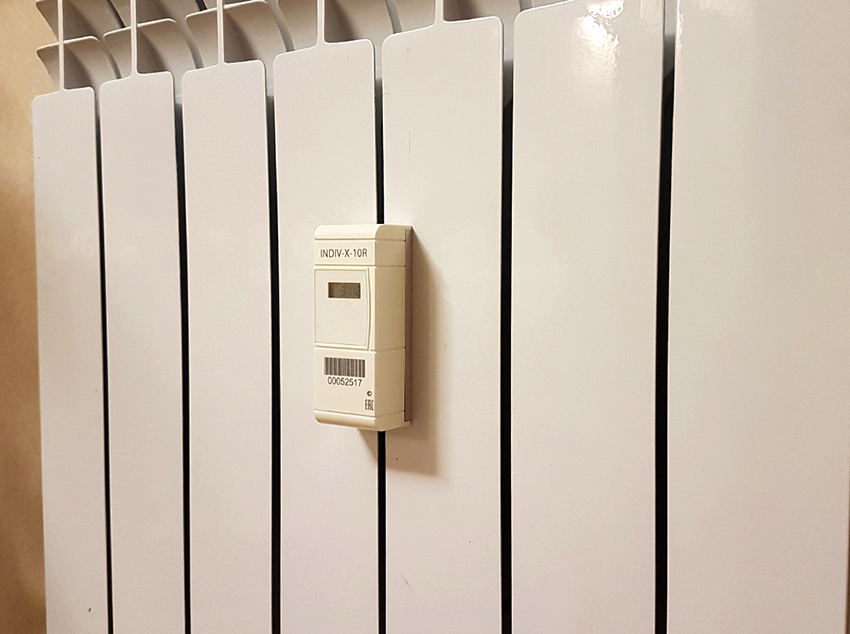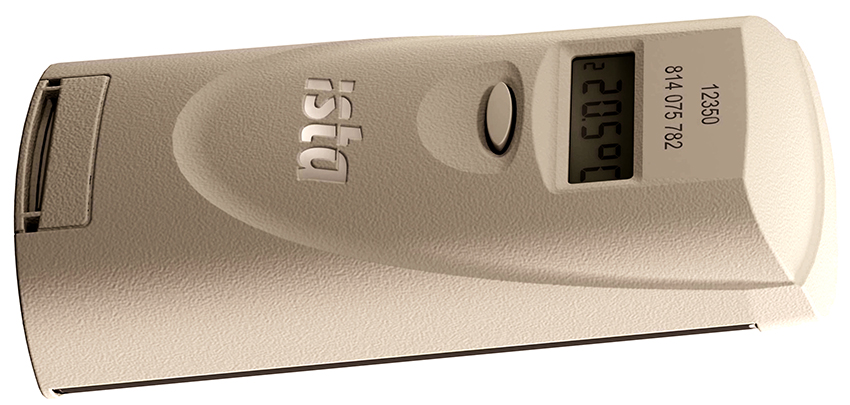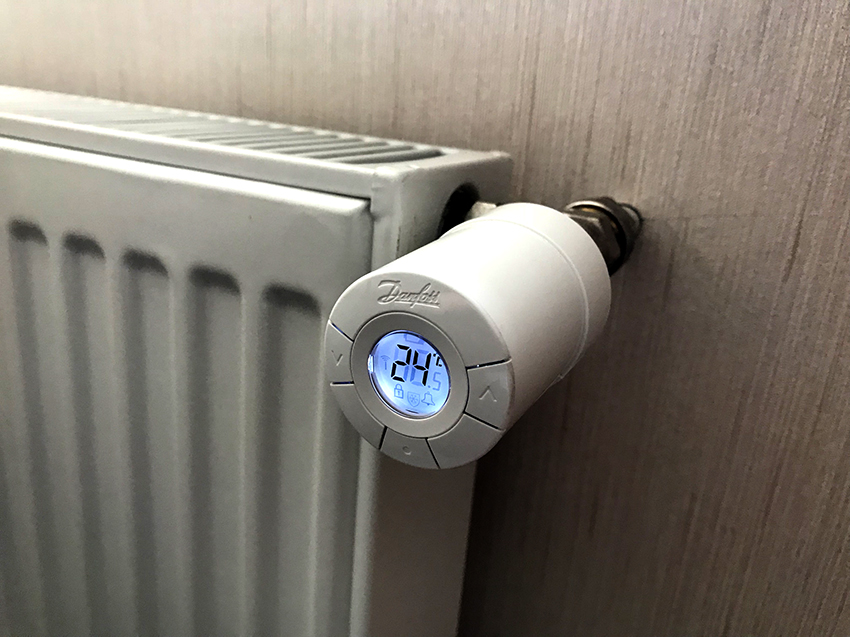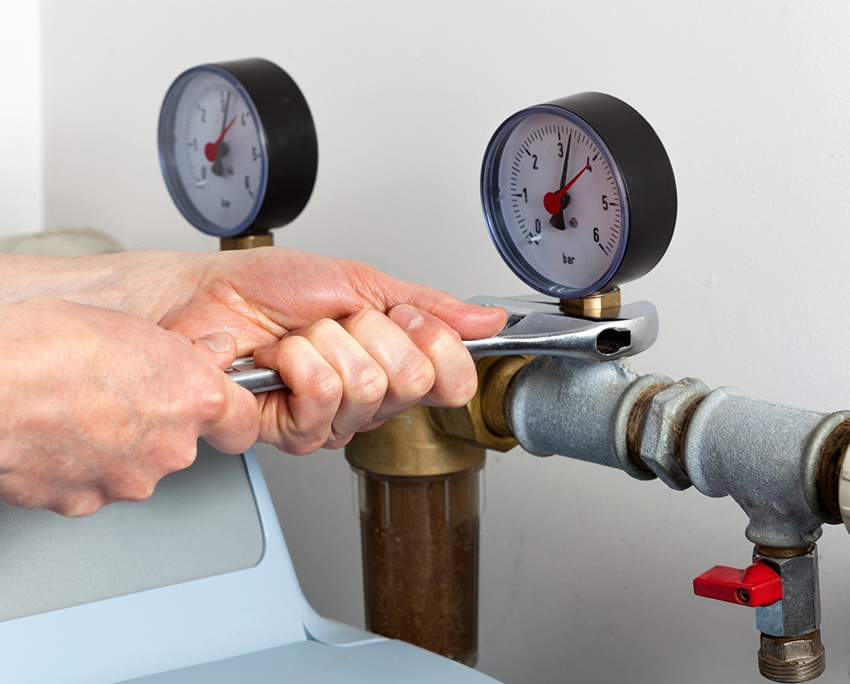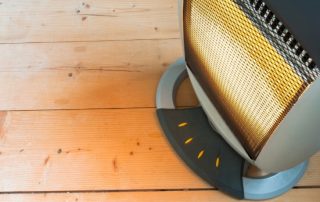Heating in the cold season is an important component of a comfortable life, but every year the heat supply services become more and more expensive. The radiator temperature is not always sufficient for normal heating. Having installed a meter for heating in an apartment, you will need to pay not for the norms established by utilities, but only for actual consumption. Already in the first heating season, it will be possible to reduce the consumption of the family budget.
Content [Hide]
- 1 Why is it necessary to install a meter for heating in a residential area
- 2 The main types of wiring of the heating system in a residential building
- 3 Heating meter options: individual and general household appliances
- 4 What you need to consider before installing a meter for heating in an apartment
- 5 The main types of heating meters for an apartment or house
- 6 Heat energy calculators and distributors: advantages of use
- 7 Where to buy and how to put heating meters in an apartment or house
Why is it necessary to install a meter for heating in a residential area
Lack of high-quality heating due to improper operation of the heating system often forces apartment residents to look for alternative sources of heat. Moreover, the reason for poor heating is not always a breakdown in the heating system. Often, workers in housing and communal services, in an effort to save money, screw on the valve, which reduces the flow of hot water, which is especially felt by residents of the upper floors of high-rise buildings.
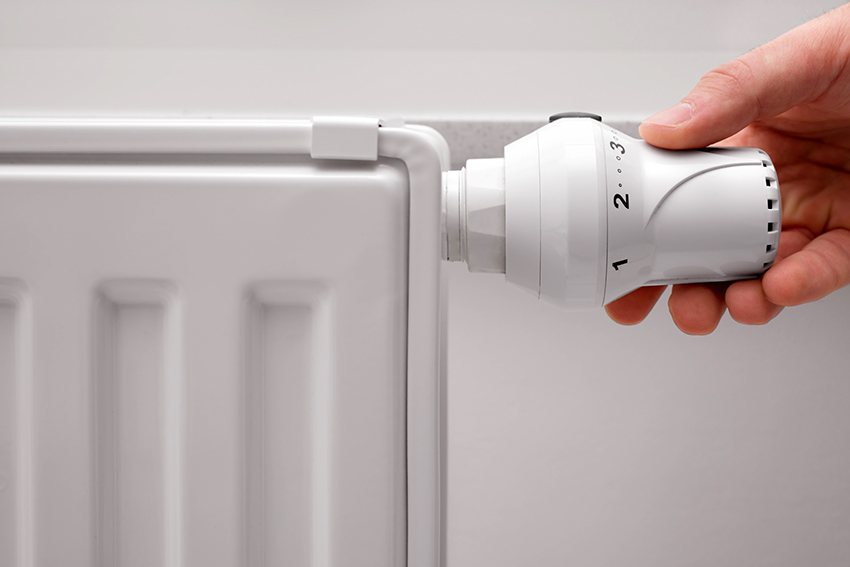
Quite often, due to poor performance of the heating network, it is necessary to look for alternative heat sources
This results in insufficiently warm batteries and the need to use electric heating devices, which, in turn, leads to increased energy costs. At the same time, heating in the apartment does not become cheaper. The result is that users have to overpay on all fronts.
Important! The installed and registered heat meter for the battery will allow you to pay only for the heat consumed by a particular apartment, and for nothing more.
Another reason for high payments is often the difference in the temperature of the water that comes out of the boiler room and that that goes directly into the apartment. Often, the temperature of the water in the radiator is much lower than normal, which occurs due to heat loss on the main line due to poor insulation or damage to pipes. Even in this situation, all costs fall on the shoulders of the end user.
Sometimes the situation can be completely different, when the batteries are so hot that you have to open windows to ventilate the room. In this case, you have to pay, in fact, for heating the street, which is also not considered correct. Regulators, which are often installed together with heat meters for heating, will help to avoid problems.
The main advantages of installing a heat meter in an apartment
The heat energy meter is mounted directly on the pipe through which the heating enters the apartment, and only calculates the amount of actually used heat. If you additionally install a thermostat that controls the flow of water to the device, it will be possible to control the flow of hot water, which can be reduced if necessary. As a result of the work done, the final consumption figure will be significantly lower than that determined by the standards.
After installing and registering a heat meter in an apartment, you can be sure that only heating costs will be taken into account in the payment. After installation, you will not have to pay for heat losses during transportation or for related costs resulting from poor quality services provided by the heat generating company. Heat metering is carried out on the basis of the following indicators:
- consumption of hot water delivered to the apartment;
- water temperature at the entrance to the heating system and at the exit from the apartment.
As a result of the costs, the amount of heat consumption is determined per day, month or year, calculated in hectacalories. Modern apartment heat meters have the ability to store data on monthly heat consumption over an extended period, usually up to 10 years. Some devices are distinguished by an additional option that allows you to connect it to a computer and transfer readings via the Internet.
If there is any doubt whether the meter is profitable for heating in an apartment, you can pay attention to a simple calculation: the price of the device together with the installation is from 7 thousand rubles, and the minimum service life is 12 years. During one season, you can save from 4 thousand rubles on heating by the meter, which depends on the area of the apartment. Accordingly, for 12 years of use, at least 48 thousand rubles are saved, and this figure is far from final.
Helpful information! The only option when you should think about whether it is necessary and possible to put a meter for heating in an apartment is if the housing has a vertical connection system and has not one riser, but several. In this situation, each riser needs its own meter, and this is already costly. In such a situation, it is recommended to install one device at the entrance.
The operating costs of the meter are insignificant, because basically only the call of a specialist in device calibration is paid, which is carried out no more than once every 5 years. It is also necessary to sometimes replace the batteries, but this also has to be done by those who do not use the meter.
The main types of wiring of the heating system in a residential building
Multi-storey buildings can have one of the heating system layout options - vertical or horizontal. Houses of the old foundation, such as Khrushchev and Stalin's houses, are mainly characterized by vertical heating systems. In this case, the heating circuit can be one- or two-pipe. However, the flow of heat carriers along the interfloor levels has a sequence from bottom to top and top to bottom. The main disadvantages of vertical layout:
- Heat is distributed unevenly, because the coolant is driven along the interfloor contour with a vertical orientation.As a result, apartments on different floors will receive an unequal amount of heat. So, apartments in a 10-storey building up to the 5th floor will be heated better than the last 5 floors.
- The complex process of regulating the flow of heating to the radiators and the need to install an additional jumper on each battery in the form of a pipe, the so-called bypass, which regulates the flow of the coolant in the radiator.
- Constant readjustment of shut-off valves depending on changes in pressure and temperature of the water supplied to the system.
The main disadvantage of vertical wiring is the complexity of installing an individual heating meter in an apartment, because you will need to purchase a separate heat meter for each riser, which significantly increases costs. In this case, another instrument for metering energy consumption is more often used - a heat distributor, for the installation of which the consent of at least 50% of the residents of the entrance is required.
Most new buildings are distinguished by horizontal distribution of heating, when there is also a vertical riser, designed to distribute the coolant to different floors, and a return line. Both from the first and from the second riser, horizontal pipes are brought into each apartment, carrying out both the supply and the reverse outflow of water from the system. The return line serves to collect the cooled water and transport it back to the heating plant. The advantages of horizontal wiring include:
- the ability to regulate the temperature of the heat supply to the batteries of each apartment;
- repairing the system in a separate circuit without shutting down other apartments;
- the ability to disconnect each circuit from the heating separately.
Heating meter options: individual and general household appliances
Depending on the conditions and layout of the heating network, there are two types of heat meters: general and individual - in each apartment. Both methods have the right to life, and each has its own advantages and disadvantages.
A common house heat meter in an apartment building is considered an excellent option, especially if most residents are ready to financially participate in its installation. Despite the fact that the cost of installation and the price of a heat meter are quite high, if the final amount is distributed among the tenants, the result will not be such a large figure. Accordingly, the more applicants, the cheaper the work will cost. Every month, data from the meter are taken by employees of the heat supply organization, who distribute the resulting figure between apartments, taking into account the area of each.
Important! If the service provider does not comply with the contractual temperature of the water supplied to the home heating system, then by law he will be obliged to return the money spent to the users.
Before purchasing a general heat meter for heating, you should solve the following tasks:
- Conduct a meeting of residents of the house, interview those who are willing to invest personal funds in the installation of the device. It is allowed to install the device only when the majority of those living in the house are ready to support the idea.
- Discuss the features of the subsequent installation, choose a supplier that will take readings from the meter and issue receipts for heat energy consumption for each consumer.
- It is imperative to record the results of the meeting in the minutes and send a written statement about the desire to install the heating device to the company that is responsible for the supply of heat.
- Draw up an agreement with a heat supply organization and pay for the used heat energy after the fact.
So that the process of installing the meter does not drag out, experts recommend immediately contacting companies that provide a full range of services for installation, project creation and approval. And you also need to first find out if the current heat service provider is installing meters. Often, utilities have agreements with private firms that install heat meters in houses entrusted to them on preferential terms.
As for the benefits, installing heating meters in the house is considered an economical solution. However, there are some nuances. For example, if the windows in the stairwell are old, broken, then the heat loss along the staircase will be significant, which will subsequently affect the total amount for heating. Sometimes, due to such losses, heat costs can exceed standard norms. These nuances must be foreseen in advance and the feasibility of installation must be assessed.
Individual heating meter for the apartment
Despite the fact that in some cases the installation of heat meters at the house or in the entrance will be cheaper, but the economic effect may not be expected soon. For this reason, many consumers prefer individual meters, which are mounted directly in each apartment.
Helpful advice! The price of individual heat meters in an apartment is higher, but as a result of installing the device, the payment for heat will be lower than when using a common house device.
Before installing the meter, you first need to figure out how the heating meter works in the apartment. So, the work of an individual device involves placing a distributor on each battery, the task of which is to fix the temperature and its fluctuations over a certain period. Usually, the differences are taken into account during the month. Based on the obtained indicators, the payment for the consumed thermal energy is calculated.
To understand whether it is possible to put a meter for heating in an apartment, you need to know some restrictions arising from technical reasons. Considering that the installation of a heat meter is carried out on each riser, then if there are several risers in an apartment, installation of several devices will be required. Therefore, with vertical distribution of heating, distributors are installed, which calculate the heat consumption based on the temperature difference on the surface of the battery and in the air of the room.
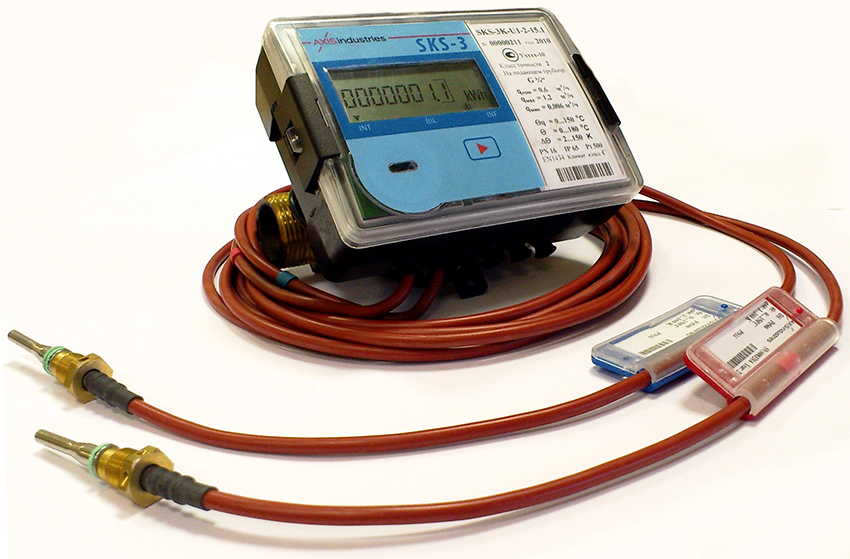
Installation of an individual meter will cost more than a general one, but the cost savings thanks to it are more significant
With horizontal wiring, it is much easier to install the meter on a heating battery. In rare cases, heating devices are attached to the return line, but in this case, the calculation is carried out according to a different principle.
What you need to consider before installing a meter for heating in an apartment
The placement of heat meters in houses on the territory of the Russian Federation is regulated by Federal Law No. 261, which obliges the installation of common household appliances that take into account heat costs. Installation is carried out at the expense of associations of apartment owners, the so-called condominiums. The method of payment and the method of calculating services in houses with an installed heat meter is regulated by the Resolution of the Cabinet of Ministers of the Russian Federation No. 354. The following are the main theses of this resolution:
- If there is no device for calculating heat energy at the entrance to an apartment building, payment for heat supply is calculated at an increased coefficient, which in 2017 was 1.5.
- According to the laws of the Russian Federation, the landlord is not obliged to install a heat meter in the apartment, but there are also no prohibiting acts for the performance of such work.
- The readings of a heat meter for heating in an apartment will be taken into account only in a house where not only 100% of apartments are equipped with heat meters, but also heated common areas. Also, a prerequisite is the installation of a common metering unit in the house.
- A device for individual use is commissioned by a heat supplier and maintained by its employees. Repair, verification or replacement of the heat meter is carried out at the expense of the owner of the apartment.
From the above theses, it follows that the installation of a common heating unit at the house is considered mandatory, because otherwise heating services can increase by 1.5 times, and data from a personal meter will not be taken into account at all. For these reasons, it makes no sense to install meters for heating in an apartment if the house contains rooms with uncontrolled heat consumption.
Important! According to the law, the utility provider may allow the installation of the device, but when drawing up the payment it has the right not to take into account the indicators obtained. Therefore, this kind of nuances must be solved in advance - before installing the meter, so as not to get senseless waste.
In some cases, in the absence of technical capabilities for the installation of a common building unit that controls the flow of heat into the house, an official act is issued confirming the impossibility of performing work. Therefore, the only correct option is to install a heat meter in an apartment and separately in an entrance, because an individual device does not take into account the consumption of heat energy spent on heating non-residential premises, which includes:
- stairwells and landings;
- Technical buildings;
- cellars;
- pantries.
Related article:
Radiator screen: a protective and decorative element in the room
What is he like. Element functions. Types of grilles depending on design, mounting option and material of manufacture.
The main types of heating meters for an apartment or house
The main task of heating meters in an apartment, multi-storey or private house is to calculate the amount of energy consumed to heat a particular dwelling. This takes into account not only the volume of water that has passed through the radiator, but also the energy consumption given by the water in the room. The formula for calculating the amount of heat is as follows:
Q = V * (T1-T2), where:
V is the volume of water that has passed through the heating system;
T1 - water temperature in the supply riser;
T2 - temperature indicators of water in the branch line;
Q - the amount of heat received by the apartment or other premises, on the basis of which the amount in the payment is calculated.
Based on the data required for the calculation, the heat meter for the battery must have a rather complicated design. Regardless of the type of device, it consists of the following elements:
- Flow sensor. Installed on the supply riser of the heating system to calculate the used volume of water passing through the system for a set unit of time.
- Thermal converters. These are temperature sensors installed in the device in the amount of two pieces (separately for the supply and discharge pipes). The converter measures the difference between the incoming and outgoing water, calculates the amount of heat used for heating.
- Calculator. This is the element responsible for calculating the received data and converting them into the amount of heat consumed. Depending on the model of the device, there is either a push-button or a touch-sensitive control panel, through which data is entered.
Important! Whichever device is chosen for installation in an apartment or in a house, the device must have a passport and certificate. It is necessary that the documents contain information about the initial verification of the meter carried out by the manufacturer. All information should be duplicated on the heat meter body in the form of a sticker or a stamp. Most instruments come with a verification sheet, which is filled in by the responsible person.
A large number of battery meters are allocated, but in the conditions of apartments the following types are mainly used:
- mechanical (or tachometric);
- electromagnetic;
- vortex;
- ultrasonic;
- overhead sensor.
The main characteristics and prices of meters for heating batteries in an apartment
Mechanical heat meters in an apartment got their name due to the fact that the flow rates of heat carriers are calculated using an impeller immersed in a pipe. The device operates by means of two sensors embedded in the supply and return lines. The task of the sensors is to calculate the heat energy consumption by determining the difference in water temperatures. The main advantage is the low price of the meter for heating (from 5200 rubles). Many experts note the excessive sensitivity of the device to the quality of the coolant, as well as the weak protection of the device from penetration in order to twist the indicators.
The principle of operation of an electromagnetic meter for a heating battery in an apartment is to calculate the electric current that occurs when heat carriers pass through a magnetic field. The devices are characterized by stable operation and are widely used. If, during the installation process, the wires were connected poorly or any impurities got into the coolant, an inaccurate transfer of measurements is possible, which can entail both savings and unnecessary costs. The advantages of electromagnetic meters include:
- high accuracy of the received data;
- long service life;
- the ability to install in any convenient position.
Among the shortcomings, it is worth noting the price of a heat meter, which starts at 22 thousand rubles, which significantly exceeds the cost of other types of devices. Also, when installing the device, special care should be taken to connect the electrodes to avoid inaccuracies. Due to the high cost not only of the device itself, but also of maintenance, it is rarely used.
What are vortex heat meters in an apartment: prices
The design of a vortex heat meter in an apartment is created taking into account the fact that when a coolant enters the device, special vortices are formed as a result of resting on an obstacle that is built into the device. By determining the frequency of each vortex that has arisen, which is proportional to the speed of movement of the fluid in the coolant, the energy consumption is calculated.
The speed is read using either ultrasound or a magnetic field, after which the volume of heated water in the heating system is determined. A vortex thermal meter has the following advantages:
- an affordable price of a meter for heating in an apartment - from 10-12 thousand rubles;
- long term of work;
- minimal wear of parts, which significantly reduces the cost of repairing or replacing the device;
- the ability to install not only with horizontal, but also with vertical wiring of the heating system;
- minimum power consumption.
Interesting information! To measure the amount of heat consumed by an apartment building or industrial facility, a so-called industrial or house heat meter is installed, which can be vortex, turbine or electromagnetic. The main difference between household and industrial appliances is the size of the pipe section.The price for the device starts from 23 thousand rubles.
Among the disadvantages of using a vortex device, the complexity of the installation is highlighted, for which a large gap of the pipeline is required. Other disadvantages of the device:
- High sensitivity to extraneous vibrations, due to which the device may fail over time.
- The requirement of the device for the quality of the heat carrier, because when contaminated water is supplied, the indicators may be distorted.
Ultrasonic individual heating meters: prices
Ultrasonic meters for heat in an apartment calculate the flow rate of the coolant thanks to an ultrasonic signal that is supplied by the emitter and read by the receiver. Both elements of the device are fixed at a certain distance from each other on a horizontal heating radiator. The notification emanating from the emitter moves with the coolant flow and reaches the receiver after a certain period of time, which depends on the speed of movement of warm water in the heat supply system circuit. The calculation of the heat energy consumption is based on the time taken for the signal to travel from point to point.
More than 10 types of ultrasonic heat meters for apartments are produced, but the most popular are:
- frequency;
- Doppler;
- correlation.
In addition to the main task of calculating energy costs, the flow meter can have an additional built-in function that regulates the flow of hot water into the system. The main advantages of using an ultrasonic device:
- Low cost of the device with a standard package. The price of a heating meter for an apartment of domestic production starts from 8 thousand rubles, and foreign - from 12 thousand rubles.
- Convenient interface. Cost metrics are displayed on the LCD at the touch of a button.
- After installing the appliance, there are no changes in the hydraulic pressure of the heating system.
- Long service life - at least 10 years. In this case, verification should be carried out no more often than once every 4 years.
- Powered by a battery built into the device, which excludes a malfunction as a result of power surges or blackouts.
Like most other devices, according to reviews, an ultrasonic-type meter for heating in an apartment is also sensitive to the quality of water in the heating system and can give a short-term failure due to the appearance of air bubbles or dirt particles formed as a result of scale or scale. Most often, the indicators change upward. The main condition for installing an ultrasonic heat meter is the presence of straight pipe sections in front of the device and after it. The total length of a straight pipe segment should not be less than one meter. Only in this case the manufacturers guarantee the accuracy of the calculated readings.
Heat energy calculators and distributors: advantages of use
Calculators and heat distributors are meters that calculate the relative costs of heat energy. They consist of a thermal adapter and two elements that are sensitive to temperature changes. The sensors measure the temperature of the surface of the battery and the air in the room every 3 minutes, determining the difference in indicators. The resulting values for heat consumption are added and generated on the device screen.
Heat calculators on each sensor are set immediately before installing the device and putting it into operation. To do this, all the required coefficients and power indicators are entered into the memory of the heat energy meter, which then allow the device to display the amount of consumed heat consumption.
Important! The data displayed on the device screen are conventional units, for the conversion of which to kW / h, it is necessary to multiply the obtained figures by the power of the heating radiator, which is indicated in the passport for the product, as well as by the coefficient corresponding to the type of radiator, confirmed by the meter manufacturer.
For the reason that distributors and calculators determine the consumption of heat energy in one radiator, their number should correspond to the number of batteries in the apartment. Both types of heat meters work properly, regardless of the quality of the heat carriers circulating in the heating system. Other advantages are:
- relatively low price of devices - about 2000-3000 rubles;
- long service life - more than 10 years;
- simple and easy installation on the battery surface;
- the presence of a single controller that calculates the sum of indicators read from several devices (the option is not available in all models).
Before installing a meter for heating in an apartment of this type, it must be borne in mind that the relative error of the obtained indicators in some cases reaches 12%, a particularly large deviation is shown by heat distributors. You also need to competently approach the purchase of a kit for installing the device, which must correspond to the type of battery installed. If you choose the wrong kit, the quality of information collection will be significantly reduced, therefore, without a specialized installation kit, it is more expedient to simply install a heat meter near the radiator.
Where to buy and how to put heating meters in an apartment or house
You can buy a heat meter both in a specialized store and on the Internet, guided by the principle of choosing household appliances, when it is better to deal with a proven and popular manufacturer, for whose product you can find a sufficient number of truthful positive reviews. Often, manufacturers not only provide a guarantee for the product, but also provide service or warranty maintenance.
At the time of purchase, you should check the availability of the warranty certificate and technical passport. It will not be superfluous to verify the serial number of the device with the one entered in the product passport so as not to purchase a fake product. It is recommended to first make sure that the device has a measuring range corresponding to the parameters of the heating system in a particular installation location. The following should be noted: despite the fact that it is feasible to carry out the installation on its own, it is better to involve professionals in this process. The algorithm of work regarding the installation of the device consists of the following stages:
- drawing up a preliminary plan for the work and the implementation of coordination with utilities;
- direct installation of a certified device that has the appropriate documentation;
- registration and registration of the heat meter with public utilities;
- putting the heat meter into operation.
Before allowing the device to be put into operation, the representative of the heat supplier must compare the serial numbers and the numbers indicated in the passport, as well as check the quality of the installation and its compliance with the technical passport and project documentation. On average, the time between calling a representative and issuing an admission for installation is 5-7 working days. Permission or refusal is issued within 10 days from the date of the first application.
Important! The process of completing the installation of the device must be accompanied by its sealing. It is the presence of the seal that guarantees the smooth introduction of the device into operation.
Usually the heat supplier company has its own specialists who are engaged in verification, so first of all you need to contact them.In the passport, documents are attached to the device indicating the period after which the device must be verified. Most often this period is 4-5 years. To calibrate the heat meter, you will need to leave a request at Rostest or another testing company by calling. Data to be provided:
- heat meter model;
- the principle of operation of the device;
- installation date;
- meter series number.
By phone, you can also agree on the time of the verification, which will suit the employee and the client. When performing the verification, the employee must make sure of the quality of the device and the correct accounting of heat consumption indicators, after which he will issue a document confirming the success of the verification and the date of its performance.
The heating meter is considered a valuable device that will help you really save money on utility bills. If you follow all the rules during installation and calculate the feasibility of purchasing a device, you will not have to pay extra money for poor quality services provided by a heat supply company, which are getting more expensive every year.
